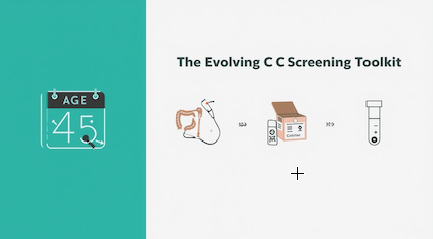Unlocking Neurolinguistic Programming for Treatment of PTSD, Phobia, and Fear.
- OliveHealth

- Apr 5
- 4 min read
Updated: Apr 6
by Edwin Fuentes M.D. April 5, 2025 3PM

Freedom, Joy and Peace is your ultimate goal. But nothing wrong with great relationships and money in your pocket.
Abstract
Phobic disorders and post-traumatic stress responses constitute significant and often debilitating mental health concerns worldwide. This article examines the current body of knowledge regarding the application of Neuro-Linguistic Programming (NLP) as a therapeutic modality for these conditions. While anecdotal reports from NLP practitioners suggest efficacy, rigorous empirical research remains relatively sparse. This paper synthesizes relevant literature from the United Kingdom and the United States, indicating that NLP may offer an effective and efficient approach to the treatment of phobias, potentially facilitating symptom reduction within a condensed timeframe.
Introduction
Neuro-Linguistic Programming (NLP) originated in the United States during the 1970s through the collaborative work of John Grinder and Richard Bandler. Bandler, then a psychology student at the University of California, Santa Cruz, analyzed recorded psychotherapy sessions conducted by Gestalt therapist Fritz Perls. Bandler identified specific linguistic patterns employed by Perls that appeared to enhance the effectiveness of positive suggestions. He shared his observations with John Grinder, a linguistics professor, and together they further examined Perls's techniques. Additionally, they studied the work of Virginia Satir, a successful family therapist, and Milton Erickson, a renowned hypnotherapist. Grinder and Bandler aimed to model the patterns used by these therapists to develop teachable techniques for achieving similar therapeutic success. Their findings were first published in The Structure of Magic (Bandler & Grinder, 1975).
From these foundational studies, NLP evolved into a methodology for personal development and an examination of effective thinking and communication strategies. The term "Neuro-Linguistic Programming" reflects three key components: "neurological," indicating that behavior originates from the brain's processing of sensory information; "linguistic," emphasizing the role of language in organizing thoughts and communication; and "programming," acknowledging the modifiable nature of thoughts and behaviors to achieve desired outcomes.
The study and practice of NLP rapidly expanded in the United States and internationally, resulting in numerous NLP training programs worldwide. While precise figures are difficult to obtain, the popularity of NLP training suggests a significant number of participants globally. NLP has gained significant recognition as a popular approach to communication and personal growth, with applications in professional fields such as sales, management, and sports training. While NLP has diverse applications, it is particularly valuable in medicine for developing patient rapport and treating conditions like irritable bowel syndrome, substance abuse, obesity, and chronic pain (Tosey & Mathison, 2003). As NLP emerged from the study of successful psychotherapists, it is also highly relevant in psychotherapy. Building on the family therapy principles outlined in The Structure of Magic 2, NLP has produced effective psychological techniques for addressing anxiety and depression (Gray, 2009). Notably, NLP has shown promise in treating phobias, with claims of achieving a "cure" within an hour (Bandler & Grinder, 1979/Reference provided in the original text).
Phobias
The Diagnostic and Statistical Manual of Mental Disorders (4th ed.; DSM-IV; American
Psychiatric Association, 1994) defines a phobia as "unreasonable fear or anxiety in connection with exposure to specific objects or situations," often leading to avoidance behaviors. Phobias can be categorized into specific phobias (e.g., animal phobias like arachnophobia, natural environment phobias like hydrophobia, and situational phobias like claustrophobia).
NLP and "Anchoring"
The acquisition of a phobia can be understood as a form of rapid Pavlovian classical conditioning, where a single exposure to a stimulus paired with a fear response creates a strong association. Subsequent exposure, even through imagery, can trigger the fear response (Dilts, 1999).
The NLP Phobia Cure
Traumatic phobias, which elicit a physiological and emotional response even with brief mental recall, are stored as synesthesias, where two representational systems become linked. In most cases, this involves a visual/kinesthetic synesthesia, where recalling a visual memory triggers a fear response. However, auditory/kinesthetic synesthesias can also occur (O'Connor & Seymour, 1990, p. 147).
Evidence in Research
Despite the anecdotal evidence supporting NLP’s efficacy in treating phobias, empirical research is limited. However, some studies have examined the effectiveness of NLP in phobia treatment. For example, Furman compared the efficacy of four brief therapies for post-traumatic stress disorder, including the NLP visual/kinesthetic dissociation (V/KD) phobia cure. (Note: Find the exact year and full citation for Furman's work).
Further Applications
The NLP V/KD phobia cure may also be applicable to chronic pain management. Research indicates that addressing fear in individuals with chronic pain can lead to pain reduction (Wake, 2008). Case studies have demonstrated successful application of this method.
Reframing Phobias
In addition to the V/KD phobia cure, NLP offers alternative approaches, such as reframing. Bodenhamer and Hall suggest focusing on altering the meaning of the fear response rather than eliminating it, recognizing that fear can serve a useful purpose.
Resistance
Reframing can be a valuable tool, particularly when clients exhibit resistance to the V/KD phobia cure. The Milton Model, developed by Milton Erickson, addresses resistance by acknowledging the conscious mind's potential skepticism towards therapies like NLP and hypnosis (Lankton, 1980).
References
● American Psychiatric Association. (1994). Diagnostic and statistical manual of mental disorders (4th ed.). Washington, DC: Author.
● Bandler, R., & Grinder, J. (1975). The structure of magic I: A book about language and
therapy. Science and Behavior Books.
● Bandler, R., & Grinder, J. (1979). Frogs into princes: Neuro linguistic programming. Real People1 Press.
● Dilts, R. (1999). Sleight of mouth: The magic of conversational belief change. Meta
Publications.
● Gray, A. (2009). Practical NLP for managers: How to achieve success at work and in
your personal life. Pearson UK.
● Lankton, S. R. (1980). Practical magic: Communication in the mental health professions. Meta Publications.
● O'Connor, J., & Seymour, J. (1990). Introducing neuro-linguistic programming:
Psychological skills for understanding and influencing people.2 Mandala.
● Tosey, P., & Mathison, J. (2003). Neuro-linguistic programming: A critical appreciation for managers and developers. Palgrave Macmillan.
● Wake, L. (2008). NLP and health. Crown House Publishing.
ELF




Comments